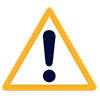


06 Aug 2025
// FDA
https://www.pharmacompass.com/pdf/news/enforcement-report-week-of-august-6-2025-14145.pdf

26 Mar 2025
// FDA
https://www.pharmacompass.com/pdf/news/enforcement-report-week-of-march-26-2025-60230.pdf

27 Feb 2025
// HEALTH CANADA
https://recalls-rappels.canada.ca/en/alert-recall/sensipar-30mg-60mg-90mg-levels-n-nitroso-cinacalcet-exceeding-established-acceptable

30 Dec 2024
// HEALTH CANADA
https://recalls-rappels.canada.ca/en/alert-recall/pms-cinacalcet-affected-lots-may-exceed-established-acceptable-intake-limit-n-nitroso

06 Nov 2024
// FDA
https://www.pharmacompass.com/pdf/news/enforcement-report-week-of-november-6-2024-85888.pdf

31 Jan 2024
// FDA
https://www.pharmacompass.com/pdf/news/enforcement-report-week-of-january-31-2024-59527.pdf